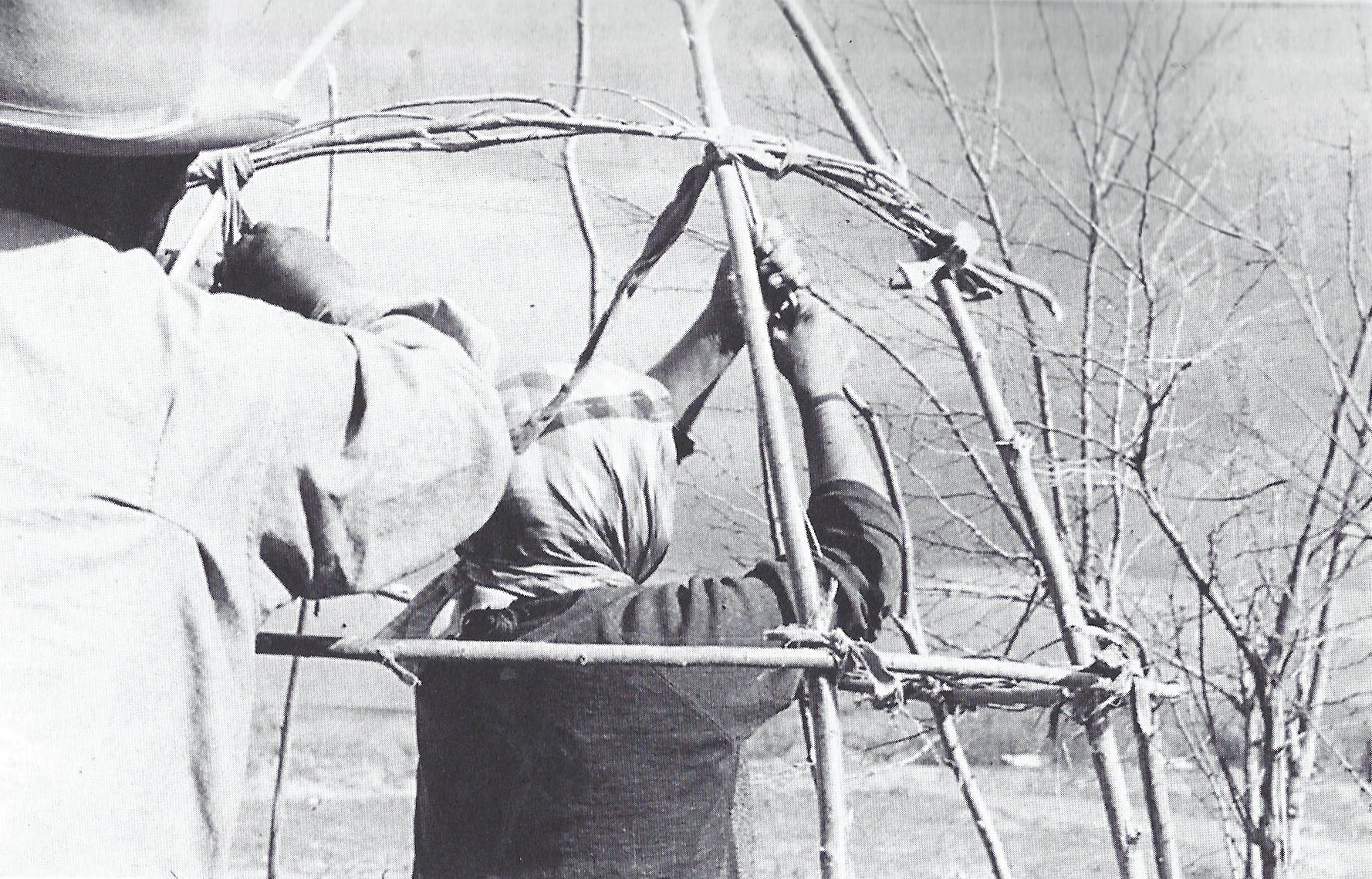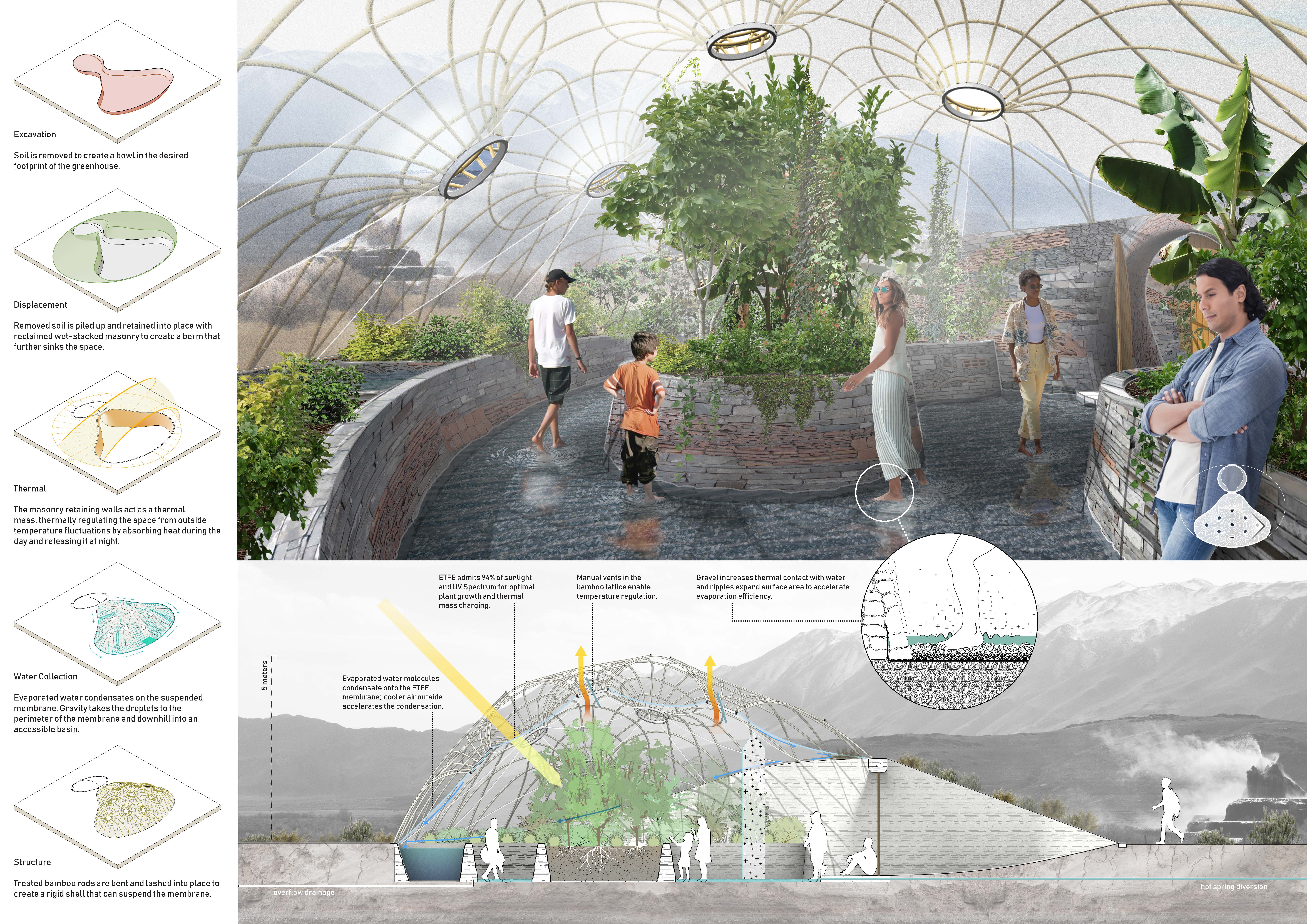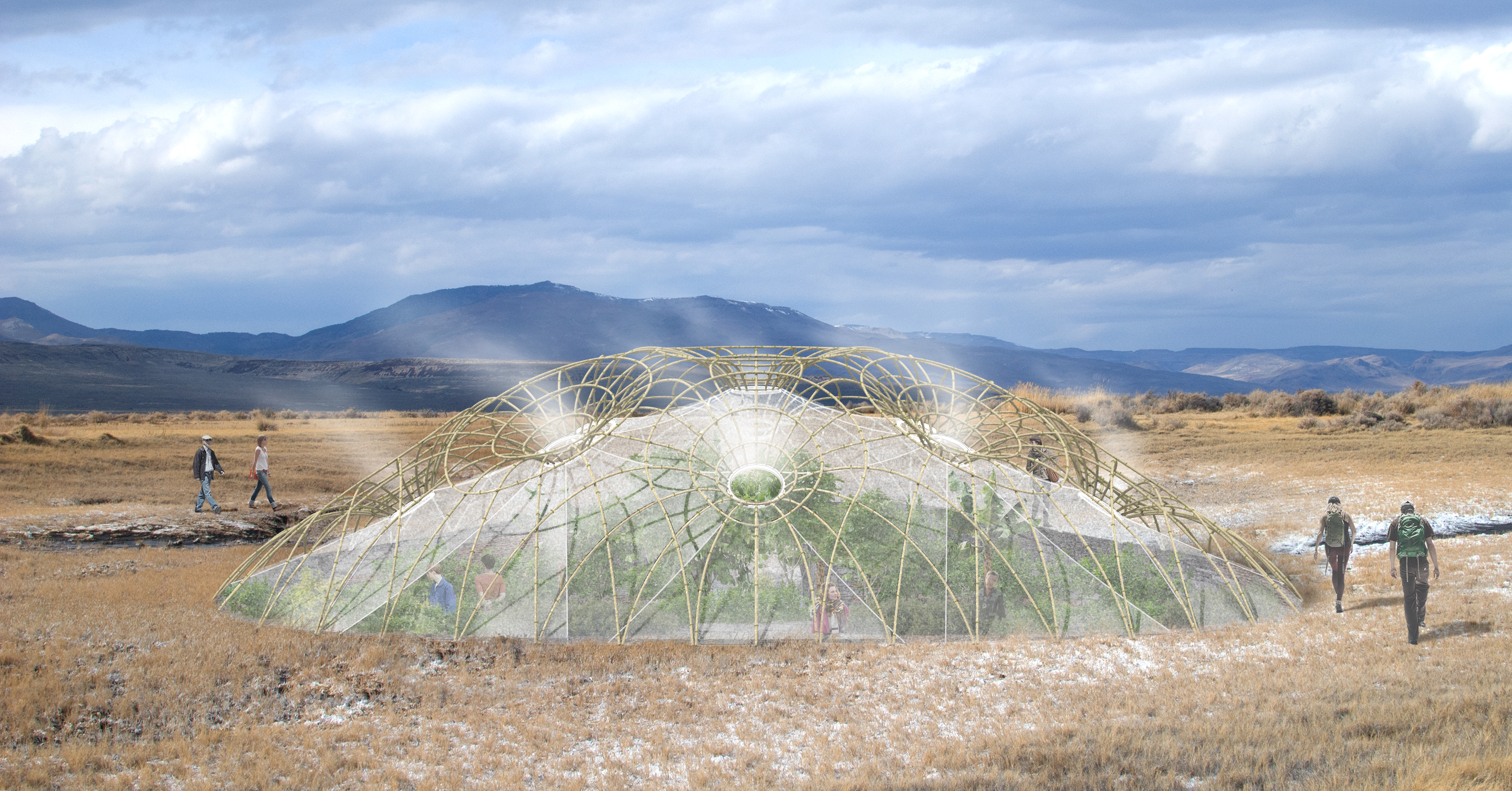![]() Weeping Desert Lab
Weeping Desert Lab
What:
Where:
When:
For:
With:
Where:
When:
For:
With:
Geothermal Greenhouse
Fly Ranch, Nevada
2020
Burning Man / LAGI
Felix De Rosen
Matt Turlock
Fly Ranch, Nevada
2020
Burning Man / LAGI
Felix De Rosen
Matt Turlock
Burning Man and the Land Art Generator Initiative issued an open call competition for proposals of innovative and artistic infrastructure to prototype on their new property. The site is about a mile northwest of their historic Black Rock City site, but the landscape is profoundly different. Rather than an empty canvas of flat, alkaline dust, Fly Ranch is a rolling landscape of sagebrush and geothermal wells with an extremeley salty soil chemistry and a sunny, arid desert climate. Our project leverages these local elements into the design of an occupiable solar still whose distilled water can be immediately used in agricultural experiments that inform the future of the site’s potential food security.
The structure is inspired by those of the native Paiute people who would bend and lash willow branches together to compose the shells of their temporary shelters. We proposed a contemporary interpretation of this tectonic system with bamboo for a more stable and permanent yet still natural and lightweight material. A layer of ETFE film is suspended from the occuli of this shell, sealing the space below to allow light through while trapping heat and humidity. Saline brackish water is channelled from an adjacent geothermal pool through a gravity gate to flood the gravel floor of the structure. Occupants agitate this water as they navigate through the room in a mandatory footbath, expanding the surface area of this naturally warm water to accelerate its rate of evaoration. This humidity condenses on the underside of the ETFE film from where it drips to the perimeter and into a collection basin from where it can be used to directly nourish the plants or distribute for human consumption. The reclaimed masonry retaining walls would behave as a thermal mass to help regulate against the dramatic diurnal temperature fluctuations of the desert climate, and the occuli portals can be opened accordingly for fresh air exchange and temperature modulation to maintain a viable climate for the plants.
Our proposal was shortlisted with the potential to eventually build a prototpe on site at Fly Ranch.
The structure is inspired by those of the native Paiute people who would bend and lash willow branches together to compose the shells of their temporary shelters. We proposed a contemporary interpretation of this tectonic system with bamboo for a more stable and permanent yet still natural and lightweight material. A layer of ETFE film is suspended from the occuli of this shell, sealing the space below to allow light through while trapping heat and humidity. Saline brackish water is channelled from an adjacent geothermal pool through a gravity gate to flood the gravel floor of the structure. Occupants agitate this water as they navigate through the room in a mandatory footbath, expanding the surface area of this naturally warm water to accelerate its rate of evaoration. This humidity condenses on the underside of the ETFE film from where it drips to the perimeter and into a collection basin from where it can be used to directly nourish the plants or distribute for human consumption. The reclaimed masonry retaining walls would behave as a thermal mass to help regulate against the dramatic diurnal temperature fluctuations of the desert climate, and the occuli portals can be opened accordingly for fresh air exchange and temperature modulation to maintain a viable climate for the plants.
Our proposal was shortlisted with the potential to eventually build a prototpe on site at Fly Ranch.


archival photo source:
Survival Arts of the Primitive Paiutes
by Margaret M. Wheat
Survival Arts of the Primitive Paiutes
by Margaret M. Wheat


 Weeping Desert Lab
Weeping Desert Lab